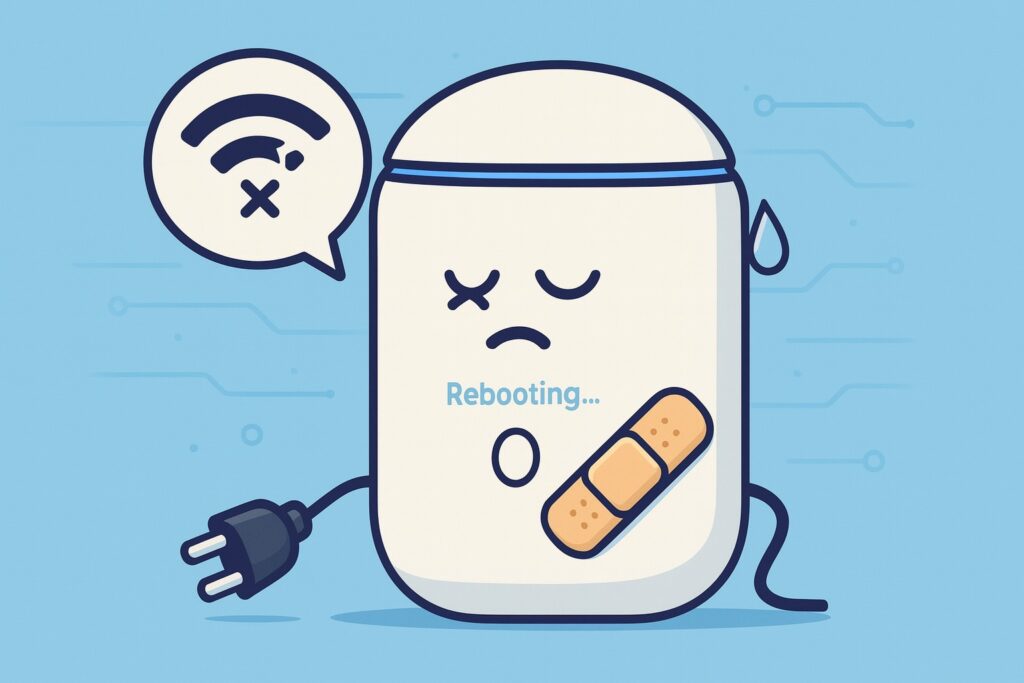A dollar saved is 2 dollars earned
– MeIr
Month: September 2025
Death of Dream Router
After almost two years, my Dream Router is crashing my dreams—it’s dying. The signs are simple: it freezes and becomes totally unresponsive. A hard reboot (unplug/plug power) brings it back like nothing happened. After contacting tech support, it looks like I’ll be getting a replacement (version 7). They also told me there’s a hardware issue in version 6 of the Dream Router.

Okay, I have a bit of a rant to perform, but before I dive into my seemingly endless expression, full credit to UniFi’s tech support — it was fast, easy, and pleasant. Only one “but”: UniFi wants the old router back before sending a new unit. If you don’t have a spare, that’s a pickle (which I’m in—hopefully that gets worked out).
Now, back to the rant. Honestly, I don’t have many disappointments—just a major one: the Dream Router is not as stable as I expected. My router expectations are simple: configure it and enjoy life — stable Wi-Fi, stable network, and no reboots unless it updates or performs some kind of maintenance. The Dream Router is more than just a router with Wi-Fi; you can connect a bunch of UniFi devices to it, but I didn’t. I wanted a stable device first — this is a fairly expensive router — and I didn’t want to dive into the UniFi ecosystem until I was satisfied with the product quality. Unfortunately, I made the right call: the Dream Router lasted a little less than two years and, by the end, I was turning off features just to make sure it wasn’t overburdened.
My configuration is fairly simple: two Wi-Fi networks — main and guest — NAT to route HTTP/HTTPS traffic to my server, QoS to limit speed to that server, IDS (intrusion detection system), and the default firewall settings. Not a lot of tuning, to be honest, and yet the router needed constant soft reboots every 2–3 weeks. The pattern was always the same: Wi-Fi would get weird — the internet would stop for a few minutes, then come back. It would repeat and get worse over time. A soft reboot, and everything was fine again like nothing ever happened. The router was like that from the very beginning, which was disappointing. Then, in early 2025, it got a software update and turned into a champ — no soft reboots, no network issues, nothing. I couldn’t believe how stable it became. My happiness didn’t last past five months; after another software update, it reverted to the old behavior — 2–3 weeks of solid work, then network issues, then a soft reboot. Rinse and repeat.
I got tired of soft rebooting (I wish there were a setting in the UI to schedule reboots), so I wrote a small bash script to log in and soft reboot it every three days. I figured that would be the end of it. Two months later I was staring at a frozen router, and ever since, it’s been freezing more frequently — finally setting an all-time record of not even 24 hours before needing a hard reboot. I disabled QoS and IDS—none of it helped. You never know when it’ll freeze again; right now it doesn’t last more than six days.
What really upsets me is the price. At the $400 mark, I expected a quality device, but it behaves like any other $100 router of the past. Yes, the Dream Router is fancy—lights, an LCD, very nice software inside (with some drawbacks I mentioned in the first article), and integration with cameras, doorbells, and other UniFi devices — but it’s unstable. How can I rely on it when it fails as a simple router? Do you really want to trust it with door access?
Hopefully I’ll receive my replacement Dream Router soon and give it another go. However, when I have to buy another router, it’s not going to be the Dream Router. I think I’ll go back to DD-WRT or another open-source firmware router.